Ever googled your name or your company’s name and found that little box on the right-hand side of the search results? You know, the one with your logo, a brief description, maybe some key facts. It’s called a Google Knowledge Panel, and while it looks like something Google magically creates, it’s actually not as “set-it-and-forget-it” as it seems. What shows up there—and what doesn’t—can say a lot about your brand. But here’s the tricky part: what happens when the info is incomplete, or worse, just plain wrong?
For marketers and brand managers, that little box is more than just a collection of fun facts—it’s a front-door impression for your audience. Whether it’s potential customers, industry peers, or the media, it’s probably the first thing they’ll see when they search for you. Who wouldn’t want to make sure it’s accurate, relevant, and screaming, “We know what we’re doing!”? Getting there, though, can feel like navigating a maze, especially when Google isn’t exactly known for holding your hand through the process.
This guide is here to break it all down—what you need to know about these panels, how to manage and update them, and why mastering them can give your brand a serious edge. Because let’s be honest, if you’re not shaping your own narrative, someone (or some algorithm) will do it for you. And that’s a gamble you don’t want to take. Let’s dive in.
Table of Contents
Key Takeaways
-
Google Knowledge Panels are your brand’s search engine calling card. Picture them as a virtual first impression. When someone Googles your name or business, that little panel on the right-hand side of the search results is like your digital handshake—it needs to represent you well. Whether you’re an individual, a brand, or a local business, understanding how to manage this feature can help you shape your audience’s perception from the very first search.
-
What Google gives, Google can also misrepresent. While Knowledge Panels appear pristine and authoritative, the information they display isn’t always accurate—and correcting errors isn’t as simple as snapping your fingers. Left unchecked, outdated or incorrect data can mislead your audience or even damage your reputation. Learning how to claim and update your panel ensures that you’re in control of your own narrative.
-
It all starts with the Knowledge Graph. The backbone of a Google Knowledge Panel is the Knowledge Graph, an interconnected web of information that Google uses to understand people, places, and things. Think of it like a library of everything Google “knows” about you and your brand. If the Knowledge Graph is the foundation, your Knowledge Panel is the shiny display case on top—and influences like structured data, PR, and verified sources determine what ends up in that display.
-
Claiming your panel is less daunting than it sounds. Google offers a verification process for individuals and organizations to claim their panels. Once verified, you have the ability to directly suggest updates and correct inaccuracies. While claiming the panel doesn’t give you carte blanche over its content, it’s a powerful starting point for actively managing your online presence.
-
Optimizing your presence is the secret sauce. If you want to improve what shows up in your Knowledge Panel, structured data is your best friend. Using schema markup on your website helps Google better understand key details about you—like your name, logo, social links, or awards—and boosts your chances of presenting an accurate, polished panel.
-
Think of publicity as a megaphone for your panel. Your Knowledge Panel doesn’t just draw from your website; it’s influenced by external signals like news articles, Wikipedia pages, and social profiles. Consistently building these sources not only enhances your credibility but can also steer the narrative Google displays to your audience. If you’ve underestimated how PR and online visibility impact your panel, it’s time to rethink your strategy.
-
Managing a panel is like tending a garden—it needs regular care. Even after you’ve claimed and optimized your Knowledge Panel, the work isn’t done. Information can go stale or get updated by external sources without your input. Routine monitoring ensures that your digital front door stays polished and accurate over the long term.
Good Knowledge Panel management doesn’t just happen by accident. It’s a mix of strategy, hands-on effort, and understanding how Google interprets the web’s vast ocean of data. Ready to dive deeper? Let’s explore how you can master this tool to amplify your online brand.
Understanding Google Knowledge Panels
Search engine result pages (SERPs) display Knowledge Panels as dynamic information boxes which appear on the right side when users search for specific entities including people and brands and landmarks and organizations.
Knowledge panels summarize important information through visually organized presentation which helps users access authoritative data from trusted online repositories while improving search efficiency.
Brands and individuals who want to create credibility while managing their online presence need to understand these panels because they control first impressions and highlight essential information through a highly visible format.
The Knowledge Graph serves as a massive database which Google uses to extract information from its massive database about entities and their connections. Through this integration process the displayed information becomes more suitable for user needs because it uses contextually relevant content. A Knowledge Panel about a public figure includes their profession together with notable achievements and social media links while business panels present reviews along with contact information and website links and operating hours.
Search users have no complete control over the generation process of Google Knowledge Panels. Knowledge Panels receive their content through a complex combination of structured data and web sources including Wikipedia or Wikidata and verified information from entity owners. A Knowledge Panel appearance demonstrates how Google algorithms perceive an entity’s importance and active reference status.
The panels maintain a dynamic nature because their content updates automatically through new information availability and user behavior. New achievements documented on websites with high authority will appear in the corresponding Knowledge Panel soon. Organizations must keep active monitoring and proactive management to ensure their representation stays accurate and relevant.
A verified connection to your Knowledge Panel can be established through Google’s verification process when you claim ownership of the panel. Entity owners who claim their panel have the ability to update information but Google maintains authority over certain changes. The narrative in Knowledge Panels depends heavily on optimizing external data sources including Wikipedia article improvements and website structured data enhancement as well as media outlet collaboration.
The effective utilization of Knowledge Panels depends on recognizing their influence on public perception. Organizations alongside public figures and local businesses who work with Google systems can enhance their digital presence to boost visibility and build trust in the competitive online environment.
Knowledge Graph vs. Knowledge Panel: Key Differences Explained
At first glance, the terms “Knowledge Graph” and “Knowledge Panel” may seem interchangeable, but they represent two distinct yet interconnected components of Google’s information ecosystem. Understanding their differences is essential for effectively managing your online presence and ensuring accurate representation.
Overview of the Knowledge Graph
The Knowledge Graph represents Google’s extensive database which connects real-world entities to their associated relationships. The Knowledge Graph launched in 2012 as the core system which enables Google to deliver search results that match users’ needs better. The Knowledge Graph contains entities which range from famous individuals and geographic locations to corporate entities and abstract concepts as well as rare specialized domains. The data entities in this network gain additional attributes and connections that form an extensive network of linked information.
For instance, searching for “Leonardo da Vinci,” the Knowledge Graph doesn’t identify him as a person alone. It links him to categories like “artist,” “scientist,” and “inventor,” and to related entities like the “Renaissance,” “The Last Supper,” and “Italy.” The deep understanding of Google enables it to figure out what the user is looking for and present search results that go beyond simple keyword matching.
How Knowledge Panels Derive Information from the Knowledge Graph
Knowledge Panels are the user-visible representation of selected Knowledge Graph data. Displayed at the top of mobile screens or at the right side of desktop search results, these panels provide a convenient summary of key information about an entity. Their design objective is to present users with short, dependable responses without needing them to go any further.
The information included in a Knowledge Panel, including a person’s birthdate, a company’s headquarters or an artist’s most famous work comes from the Knowledge Graph and also from verified third-party sources such as Wikipedia, Wikidata and official websites. For instance, the panel for a well-known author would extract biographical information from Wikipedia and publication data from the Knowledge Graph.
The other major difference is that Knowledge Panels only include a subset of the entities in the Knowledge Graph. Google’s algorithms determine which entities in the Knowledge Graph get panels, out of the billions of entities it contains, and those entities have to be considered relevant or notable enough for user searches. The Knowledge Panel is more than a passive reflection of the Knowledge Graph; it is an actively curated selection of information which enhances the user search experience.
Key Differences and Their Implications for Management
As a sprawling and amorphous database, the Knowledge Graph cannot be controlled by individuals or organizations. The content of the Knowledge Graph evolves dynamically as Google draws information from various trusted sources and makes ongoing improvements to how entities connect to each other. Although brands and individuals can increase their visibility in the Knowledge Graph through better digital presence management, they do not have the capability to modify the Graph directly.
In contrast, Knowledge Panels provide management capabilities, subject to Google’s established guidelines. Users verified by Google, such as business owners or public figures or their representatives, can submit suggestions to modify particular elements of their Knowledge Panel, including correcting factual mistakes or including an official website link. This ability is crucial for reputation management because errors in a Knowledge Panel can profoundly impact public perception.
The Knowledge Graph functions as the “engine” while the Knowledge Panel serves as the “interface.” The management of your relationship with the Knowledge Graph involves the creation of reliable structured online assets including consistent business listings, optimized schema markup and authoritative third-party profiles. The management of Knowledge Panels focuses on keeping the accuracy and professional level and relevance of its content.
Consider a brand has a Knowledge Panel which incorrectly states its founding year. The problem arises from incorrect information in the Knowledge Graph’s sources and not from the Knowledge Panel itself. The brand must both request a correction through Google and verify that fundamental data across important sources such as the company website, social media pages and reputable directories remains consistent and current.
The relationship between Knowledge Graph and Knowledge Panel shows that an effective approach requires comprehensive strategies. Success in management depends on grasping and utilizing the specific characteristics of both components which allows individuals and organizations to place themselves optimally within Google’s information network.
Understanding Personal, Brand, and Local Knowledge Panels
Google Knowledge Panels serve as strong instruments for organizing data into an organized, straightforward format. The panels serve as an interactive view of official information regarding people, businesses and locations. Knowledge Panels function as powerful tools for information management but each type functions differently within Google’s ecosystem and needs individualized approaches for optimal management.
Personal Knowledge Panels
The Personal Knowledge Panel contains information about public figures, professionals, authors, artists, and other individuals who are well-known online.
These panels have the name, photo, birth date, occupation and brief description which is derived from Wikipedia or official website of the person. The profile links to verified social media profiles and published works and notable career achievements of the person.
For instance, if an author is well known and has received many accolades then their Google Knowledge Panel would include a bibliography of their works, awards they have received and any affiliations with literary organizations. This is retrieved directly from the trusted sources which are related to the online identity of the person.
To claim or optimize a Personal Knowledge Panel it is important to have authenticity and authority. It is possible to create an online presence by contributing to authoritative platforms, ensuring that there is consistency across main profiles and also ensuring that online sources are credible. Public figures can use Wikipedia, verified profiles on Google (via tools like Google Search Console), and media coverage to influence what appears in the panel. Maintaining factual accuracy and avoiding over-sensationalized information is important for maintaining credibility.
Brand Knowledge Panels
Brand Knowledge Panels are specific panels for businesses, organizations and public entities. They provide a summary of the company name, logo, founding year, headquarters, industry sector and executive leadership.
A technology company’s panel could include its mission statement and key products as well as recent news mentions sourced from reliable industry websites and corporate pages and Google’s Knowledge Graph. This centralization of data is important for the trust of potential customers and partners.
A Brand Knowledge Panel for businesses can be managed by being proactive with structured data. Businesses should ensure that their official website uses schema markup to specify organization attributes like contact information and social media links and product descriptions. Maintaining a verified Google Business Profile (formerly Google My Business) and getting media coverage in trusted outlets can enhance the accuracy and visibility of the panel. Visibility in industry-specific directories and databases further reinforces legitimacy.
Local Knowledge Panels
The main purpose of the Local Knowledge Panels is to provide information that is specifically related to businesses with physical locations and local service providers in a particular geographic area. These panels are used for restaurants, retail stores, healthcare providers and other local entities.
The features that make Local Knowledge Panels unique include user reviews, operating hours, directions via Google Maps, address details and photos that show the business or its services. A restaurant example could have a menu, popular dish images, customer reviews displayed to attract users to either visit or make a reservation.
The first step in optimizing a Local Knowledge Panel is to ensure you have a robust Google Business Profile. Ensure that the information is consistent and accurate in all the local directories (such as Yelp and other mapping services). A business should also engage with customers by soliciting and responding to reviews which will help build trust and improve their position in local search results as well as the dynamic content of the panel. Images of high quality, regular updates and customized posts help personalize the experience for local customers.
Variations in Management and Optimization for Each Type
While Personal, Brand and Local Knowledge Panels have some common elements, their optimization strategies are quite different. Personal and Brand Knowledge Panels are more about digital authority and credibility achieved through content curation and public relations while Local Knowledge Panels are based on accurate geographic and customer data management. Each type of panel has its own triggers and audience expectations so it is important to understand these to ensure that they consistently appear in search results and display the most impactful and accurate information. The optimization process requires both technical skills and continuous reputation management to help businesses and individuals improve their online exposure and keep a strong online presence.
Step-by-Step Guide to Claiming Your Google Knowledge Panel
To claim your Google Knowledge Panel is a necessary step in the process of managing and maintaining your online presence. Taking ownership gives you the ability to improve the information presented about you or your brand which is useful for maintaining accuracy and consistency. The following are the steps to claim your Google Knowledge Panel presented in a simple way to help you do it efficiently.
Verifying Your Identity or Connection to a Brand
Before you can claim a Knowledge Panel, Google requires verification to ensure that only authorized individuals or representatives make changes. This step is critical for establishing trust and preventing misuse.
-
Search for Your Knowledge Panel
Google’s search engine enables you to find the Knowledge Panel which you want to claim. The Knowledge Panel shows up on the right side of search results pages for well-known people and organizations and brands. You should not start the process until you confirm your public presence includes enough substantial information through a personal bio or official website or structured data. -
Locate the “Claim This Knowledge Panel” Option
At the bottom of the Knowledge Panel you will find a link which reads “Claim this Knowledge Panel.” After clicking this link the verification process of Google will start. -
Choose the Appropriate Google Account
Proceed with a Google account that maintains a direct connection to your professional persona or organizational affiliation. The most effective account for verification should match official email domains (e.g., yourname@yourcompany.com) because this boosts your credibility. -
Submit Verification Documentation
Prepare evidence that proves your identity and official position in your organization for the verification process. Acceptable documentation includes
-
Government-issued IDs for individuals.
-
Business registration documents or legal trademarks for organizations.
-
Access to official websites, email addresses, or social media channels connected to the Knowledge Panel subject.
-
Follow the on-screen prompts to upload or link supporting materials to your application.
The Claiming Process
Once verification is initiated, the next steps focus on completing the formal request and gaining control of your Knowledge Panel.
Authenticate With Third-Party Platforms
Google conducts identity verification through third-party platforms such as Twitter along with YouTube and Instagram. You must connect these accounts when prompted to show your social media presence which links to the entity or individual in the Knowledge Panel.
Submit for Review
After you provide all necessary information you should submit your claim for Google’s review. The review process takes between several days and a week according to the number of submitted requests as well as the complexity of your case.
Monitor Email and Google Account Notifications
Google will send notifications through both your email address and your linked Google account about the status of your claim. Review their feedback and check that your documentation shows an accurate relationship with the Knowledge Panel subject when your application gets rejected.
Access and Manage Panel Features
After your claim receives approval you will obtain editing capabilities and update suggestions through Google tools including the ability to modify bio sections and links and other details. This access provides you with the ability to keep your personal information and brand details up to date.
Common Challenges and How to Overcome Them
The process of claiming often leads to multiple obstacles which people face during their applications. Several common issues during the process together with their resolution strategies are presented below.
Missing Knowledge Panel
Your first step should be to establish an online presence when a Knowledge Panel does not exist for your name or brand. A Knowledge Panel will appear automatically if you establish credibility through content creation and add structured data to your website and participate in public relations efforts. Your proactive efforts will eventually cause Google to automatically produce a Knowledge Panel.
Verification Denials
Verify your submitted documents to ensure they meet Google’s authentication standards when your claim gets rejected. Your email domain should display official branding because you need to link accounts from LinkedIn or integrate your Google account with a verified company website.
Delayed Responses
The review and approval process of Google operates at different speeds. During the waiting period you should maintain your online presence by updating your website and boosting social media engagement and creating authoritative content to build your credibility.
A strategic approach to these challenges will help you achieve a better claiming process and acquire control over your online identity representation. Using these tools effectively produces enduring changes in how people view your brand and personal accomplishments.
How to Update Your Google Knowledge Panel Information
Google Knowledge Panels serve as a digital presence management tool but maintaining accurate current information requires continuous monitoring. The feature does not have a direct edit option similar to traditional web pages because Google uses its Knowledge Graph database which aggregates public information from multiple authoritative sources to generate displayed information. The system provides methods to update information while resolving inaccuracies.
Methods to Request Updates
The process to update your Google Knowledge Panel starts by making suggestions through the panel interface. The first step to modify your Google Knowledge Panel requires verification through either identity or entity affiliation confirmation. After verifying your claim you can follow these steps to initiate updates:
- Start by checking your Google account connection with the panel ownership under the correct Google account. You need to be signed in under the Google account which verified panel ownership to authorize modifications.
- You can find the “Suggest Edits” or “Feedback” link located at the bottom section of your Knowledge Panel. A form appears after clicking this link where you can mark incorrect or obsolete content.
- You should present your proposed changes with both clarity and documentation support. Include links to credible sources—such as your website, verified social media profiles, or notable publications—that corroborate your suggested edits. You should provide evidence through official sources such as press releases or news articles or verified biographies when correcting incorrect birth dates or outdated roles mentioned in the panel.
Google’s team manually reviews all requests made through this process. The time it takes for updates to appear in the Knowledge Panel extends from several days to multiple weeks based on update complexity and supporting evidence availability.
Handling Incorrect or Outdated Information
Knowledge Panels occasionally display incorrect information and information that is no longer current. Start by evaluating the information sources responsible for the error. Google retrieves its information from different third-party sources which include Wikipedia as well as official websites and media outlets and structured markup data found on sites. The correction of source data leads to automatic updates of the panel information.
For example:
- Wikipedia Corrections: The process to correct Wikipedia data that appears in your panel requires you to work with Wikipedia editors by offering verifiable sources that support the corrections. Follow Wikipedia’s precise policies about verifiable sources and neutral presentations when making your request.
- Check your official website for proper structured data markup (Schema.org) optimization. The failure to correctly mark up content or neglecting meta information will confuse Google’s automated systems.
- The Knowledge Graph receives updates from external databases including Wikidata and Crunchbase along with professional directories. Check and update your entity information across these websites.
When outdated information originates from public confusion about a fact which news outlets have reported incorrectly you must implement PR strategies to achieve consistent web reporting.
Ensuring Accurate and Regular Updates
After your Google Knowledge Panel shows correct information you must continue working to protect its accuracy. To maintain success follow these recommendations:
- Update verified social media profiles and Wikipedia entries along with industry-specific directories on a regular basis. The platforms power the Knowledge Graph.
- The strategic implementation of structured data standards such as “Organization” and “Person” markup on your website will enhance its functionality. The use of structured data standards like “Organization” and “Person” markup on your website allows Google algorithms to retrieve essential details such as job titles, affiliations and contact information directly.
- You should regularly search for your brand name or personal name to detect any information inconsistencies at an early stage. Create Google Alerts for your name or brand to receive notifications about new online mentions.
- Partner with respected media organizations to publish articles and features about your brand achievements and accomplishments. The establishment of authoritative references through this process helps maintain accurate information within the Knowledge Graph.
Proactive management of these areas prevents outdated information from appearing while giving you control over your online presence transformation. Your identity or brand representation on the web remains reliable when you pay close attention to details and apply your available tools strategically.
Mastering Knowledge Panels with Structured Data Optimization
The structured data framework functions as the primary mechanism which connects your website to search engines while determining how they display Google Knowledge Panels. Structured data embedded correctly helps Google understand essential details about your entity including people, brands and businesses which results in correct user presentation. Your ability to dominate this field depends on proper schema markup implementation which produces both technical standards and relevant context for better search engine visibility.
Role of Structured Data in Knowledge Panel Generation
Google’s Knowledge Panels are not magic; they are data-driven representations of entities aggregated from a variety of sources, with the Knowledge Graph as their backbone. The Knowledge Graph receives structured data as a connection that allows search engines to understand web content through machine-readable interpretation. The implementation of structured data depends on schema markup which functions as a standardized vocabulary of tags.
The Person schema works for individual professionals and the Organization schema works for businesses to provide fundamental details including names and logos and job titles and founding dates. The data elements Google parses help maintain accurate information presented in Knowledge Panels. Structured data prevents Google from incorrectly understanding unclear or spread-out data points which results in harder-to-fix inaccuracies.
Take the example of a public speaker. The use of Person schema structured data with biographical information, work highlights, social connections, and speaking events enhances the chances for direct Knowledge panel data integration. The precise application of structured data improves Google’s trust in information authenticity.
Implementing Schema Markup to Influence Knowledge Panels
While structured data does not guarantee the appearance or dominance of a Knowledge Panel, it significantly increases the likelihood of one being generated correctly by providing clearly defined, verifiable details. To take full advantage of schema markup, start with a precise understanding of the entity type you wish to optimize for and layer relevant attributes specific to that type.
For brands, this might include logo, url, sameAs (to link official social profiles), and contactPoint (for public-facing contact details). Local businesses, by contrast, should capitalize on the LocalBusiness schema to include attributes like address, openingHours, and geo coordinates. Additionally, claims of authorship or affiliation can use the sameAs field to consolidate trust across multiple digital platforms by explicitly linking back to official websites, Wikipedia pages, or LinkedIn profiles.
Here’s an actionable starting point for schema markup implementation:
- Identify Opportunities: Audit your public-facing information to determine gaps or inconsistencies that could hinder Google’s understanding of your entity.
- Choose the Right Schema Type: Refer to Schema.org for an exhaustive list of schemas (e.g.,
Bookfor authors,MusicGroupfor bands) that align with your entity. - Markup Key Pages: Add structured data to high-authority and relevant web pages, such as your homepage, “About Us” page, or personal portfolio, ensuring logical placement of inline JSON-LD code.
- Test with Google Tools: Utilize Google’s Structured Data Testing Tool or Rich Results Test to validate your implementation and resolve errors that might impede eligibility for knowledge panel inclusion or updates.
Best Practices for Structured Data Optimization
To elevate the impact of structured data on Knowledge Panel optimization, it’s essential to adopt best practices that focus on quality, accuracy, and sustainability. A “set-and-forget” approach is counterproductive when working in the dynamic digital ecosystem where factors influencing Knowledge Panels can evolve regularly.
-
Validate Consistency Across Platforms: Data consistency is paramount. Ensure details in structured data match those on other authoritative sources like LinkedIn, Crunchbase, or local business directories, minimizing the risk of conflicting signals.
-
Keep Information Fresh: Outdated structured data undermines credibility. Regularly update your schema attributes to reflect new industry recognitions, leadership changes, or revised operating hours.
-
Diversify Data Sources: While structured data is foundational, its real strength lies in complementing other data sources. Claim and optimize listings on platforms such as Google My Business, Wikidata, and Wikipedia, which all play influential roles in Google’s Knowledge Graph.
-
Prioritize User Intent: Remember that structured data supports what users are searching for. Including unnecessary or tangential attributes may dilute relevance and hurt the panel’s ability to reflect what truly matters to the audience.
Ultimately, structured data optimization is about building trust—both with Google and with your audience. Providing clarity through schema markup, aligning it with a robust online presence, and maintaining precision in your entity’s digital footprint can transform how you control visibility in organic search and Knowledge Panel results alike.
Advanced Strategies for Google Knowledge Panel Management
To master the intricacies of Google Knowledge Panel management, it’s essential to move beyond fundamental practices into a more strategic realm. Advanced techniques focus on harnessing external influences, proactive reputation building, and ongoing vigilance, ensuring your Knowledge Panel not only exists but also reflects your desired identity accurately and authoritatively.
Leveraging Publicity and PR for Knowledge Panel Visibility
Publicity plays a pivotal role in shaping and enriching your Knowledge Panel. Google populates its panels with data from reputable sources, so strategic PR efforts can amplify your online presence and signal credibility to the algorithms. Publishing articles in high-authority, industry-relevant publications is one of the most effective ways to solidify your Knowledge Panel’s content and scope. For example, if you’re a prominent figure in the tech industry, getting quoted or featured in outlets like TechCrunch or Forbes can convincingly validate your expertise while increasing the likelihood of key information being included in your panel.
Press releases, when properly syndicated, can also contribute indirectly. If distributed through respected channels, these releases can drive coverage in trustworthy media, and references to your brand or personal achievements may eventually ripple into Knowledge Panel data streams. However, it’s critical to maintain quality over quantity—spamming low-quality PR campaigns can dilute your online presence and hinder your panel’s perceived authority.
In addition, consider proactive outreach to trusted data publishers such as Wikipedia and Wikidata. While generating editorial content for Wikipedia is bound by strict guidelines, external PR campaigns that position you or your brand in the public spotlight can influence the type of content that is organically added to these encyclopedic platforms. Similarly, maintaining accurate Wikidata entries strengthens Google’s ability to draw verified details into your panel.
Using Social Profiles and External Sources to Shape the Panel
Social profiles play an outsized role in the evolution of Knowledge Panels, particularly for public figures and brands. Linking your verified social profiles—such as LinkedIn, Instagram, Twitter (now X), or Facebook—ensures Google recognizes these as reliable sources of information about you or your organization. Consistency across social channels is paramount; mismatched names, contact details, or branding can create confusion for Google’s algorithms, potentially leading to incomplete or inaccurate panel content.
It’s also advantageous to ensure your social profiles are optimized and aligned with your Knowledge Panel goals. For example, if you aim to highlight a specific professional achievement or brand value, reinforce these messages on your profiles through consistent bios, pinned posts, and highlighted contributions. By aligning your digital ecosystem, you not only help clarify your identity to Google but also strengthen your audience engagement across platforms.
Additionally, external authoritative sources like IMDb (for entertainment professionals), Crunchbase (for business leaders), or specific trade databases contribute heavily to Google’s understanding of individuals and organizations. Endorsements and accurate profiles on these platforms can dramatically affect Knowledge Panel details. Curate and audit listings regularly, ensuring up-to-date and factual information, particularly in industries where professional memberships or certifications play a key role in establishing credibility.
Monitoring and Protecting Your Knowledge Panel Information
Managing a Knowledge Panel requires not only proactive efforts but also vigilant maintenance. One of the most overlooked aspects of advanced Knowledge Panel management is the ongoing monitoring of new or evolving display elements for accuracy. Google pulls data constantly from sources across the web, which means inaccuracies, outdated information, or unintended associations can emerge over time.
A robust monitoring strategy includes setting up Google Alerts for your name or brand to track mentions across trusted sources. These alerts can help you identify both beneficial updates (like new media coverage) and potential inaccuracies, allowing you to act quickly. For example, if an erroneous fact from a poorly maintained third-party directory begins circulating, addressing the issue at the source is critical to mitigating its influence on your panel.
For organizations managing a brand panel, trademark monitoring tools can provide similar insights, ensuring your brand name isn’t misrepresented or misappropriated online. In the event that incorrect data begins populating your Knowledge Panel, submitting feedback via Google’s “Suggest Edits” option is the most direct way to request changes. This feedback is more likely to be successful when supported by credible sources, such as links to official website updates or media articles.
Safeguarding a Knowledge Panel also means preparing for potential reputational risks. For instance, a sudden wave of negative press or a significant public controversy can reshape panel content in ways that harm your image. Establishing a rapid-response PR strategy helps you counter these effects, whether through targeted reputation-building campaigns or partnerships with reputable outlets to tell your side of the story. Proactively resolving misinformation before it cascades across your panel’s sources protects your brand integrity and credibility.
By integrating these advanced strategies, you can take control of your Knowledge Panel’s trajectory, ensuring that it not only represents your identity but also serves as a dynamic asset in your broader online presence.
Frequently Asked Questions About Google Knowledge Panel Management
Does Google Knowledge Panel management guarantees full control over the information displayed?
The answer is no—Google primarily pulls data from its Knowledge Graph, which aggregates content from authoritative and publicly available sources like Wikipedia, official websites, and trusted databases. Even after claiming a Knowledge Panel, you’re not directly editing it; instead, changes are suggested and subject to Google’s review process to ensure accuracy and compliance with its policies. This limited control often surprises users, but understanding how Google prioritizes verifiable data can help in shaping a strategy to improve the panel’s information over time.
Do I need a massive following to get a Knowledge Panel?
Another common misconception is that only celebrities, major brands, or entities with massive followings are eligible for a Knowledge Panel. While these panels are more likely for well-known individuals and organizations, smaller businesses, local figures, and niche experts can also qualify. The key lies in building a strong, verifiable online presence across multiple platforms, leveraging structured data, and ensuring inclusion in credible online references.
How do I update my Knowledge Panel?
Occasionally, users are faced with outdated or incorrect details in their Knowledge Panels. This can range from mismatched social media links to inaccurate descriptions or old photos. The first step in troubleshooting is identifying the source of the error. Use Google’s “Feedback” button in the panel itself to flag issues—this allows you to directly highlight concerns to Google’s review team. However, for more persistent inaccuracies, reviewing the underlying sources feeding the Knowledge Graph is essential. Check pages like Wikipedia, Crunchbase, LinkedIn, or databases that hold your public information. Updating these sources and ensuring consistency across platforms increases the chances of Google reflecting the correct details.
Another frequent issue involves delays in updates being reflected in the panel after data corrections. This delay often results from Google taking time to process the changes and validate their authenticity. Patience is key, but regular monitoring and re-submitting accurate feedback can expedite the process. If the incorrect information could cause reputational harm, consider engaging Google Support or a professional knowledgeable about Knowledge Panel management to escalate the issue effectively.
What do I do if a Knowledge Panel does not appear in my Google search?
Entities sometimes face the challenge of their Knowledge Panel not appearing at all when searched. This typically stems from insufficient content in the Knowledge Graph. Strengthening your digital footprint with authoritative content—such as interviews, robust About pages, verified profiles, and structured data implementation—often remedies this. Make it as easy as possible for Google’s algorithms to identify you as a distinct entity.
Resources for Further Learning and Support
For those seeking deeper insights or personalized advice, several resources can accelerate your understanding of Knowledge Panel management. Google’s own Help Center offers guidance on claiming panels and requesting updates, though it’s often light on advanced strategies. For structured data optimization or enhancing your entity profile, online tools like Google’s Structured Data Testing Tool and guides from schema.org are invaluable.
Additionally, joining professional communities focused on search engine optimization or digital reputation management provides an opportunity to exchange strategies with peers who’ve navigated similar challenges. Forums like the Google Webmaster Community also allow direct interaction with experts and Google representatives. Collaborating with a seasoned digital consultant or agency that specializes in Knowledge Panels can also refine your efforts, particularly for complex cases involving large brands or public figures managing sensitive reputational subjects. These tailored approaches not only improve outcomes but facilitate a more efficient pathway to sustained visibility in search results.
Conclusion
The Google Knowledge Panel isn’t just a digital feature—it’s an extension of your brand’s identity in the public eye. Managing it effectively means more than ensuring accurate data; it’s about seizing the opportunity to craft a narrative that aligns with your value and vision. It’s a commitment to actively shaping how you’re understood, not just by algorithms, but by the real human beings who will form first impressions based on that tiny box of information.
But here’s the deeper truth: Knowledge Panel management is a reflection of the broader principle that reputation is never static. It’s ongoing, requiring care, strategy, and humility to engage transparently with how the world perceives you. The challenge—and opportunity—is clear. Organizations and individuals who lean into this work with intention, using tools like structured data, authoritative content, and ethical practices, will not only “look better online” but lead with trust and authenticity in an increasingly connected, skeptical world. So, as you take the steps to master your panel, ask yourself: What story am I telling? And more importantly, does it reflect the values I stand for?
Tags: Knowledge Panel, SEO.
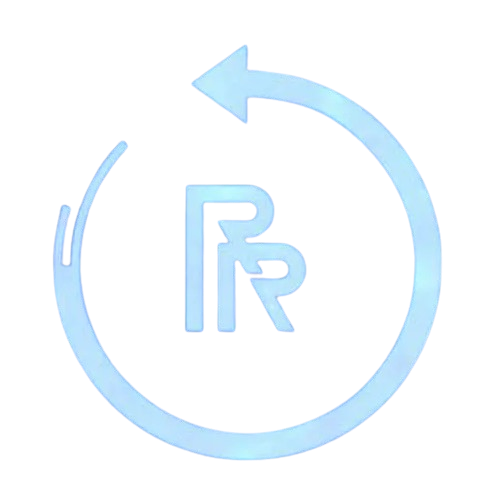
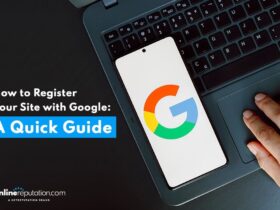



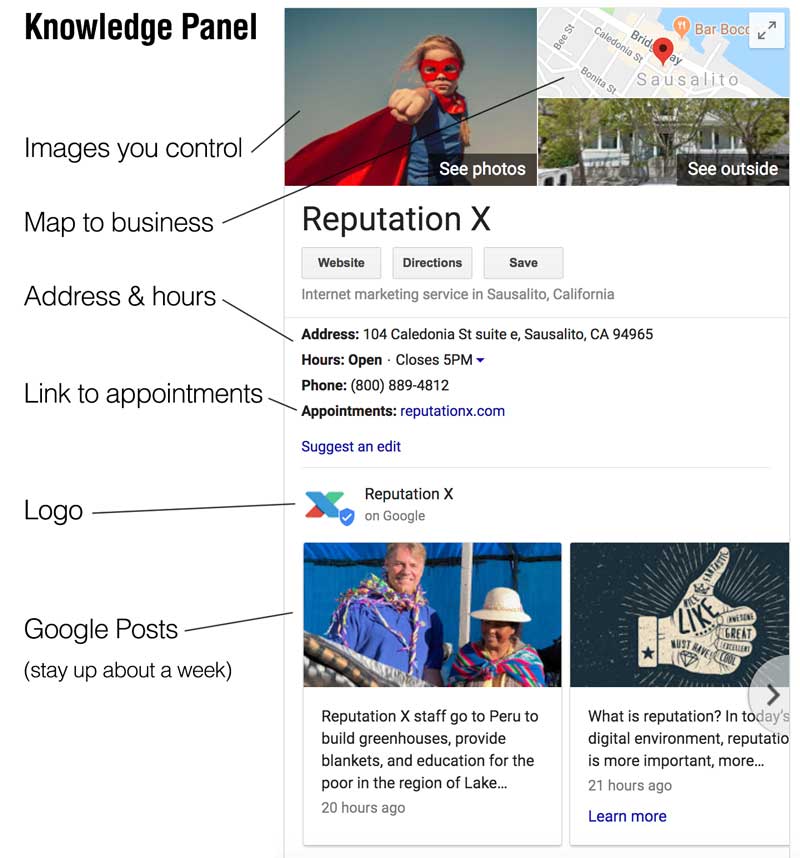

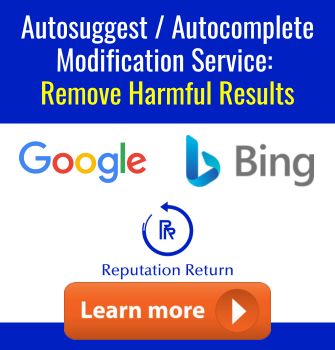


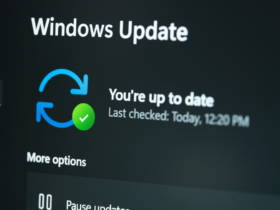




Leave a Reply